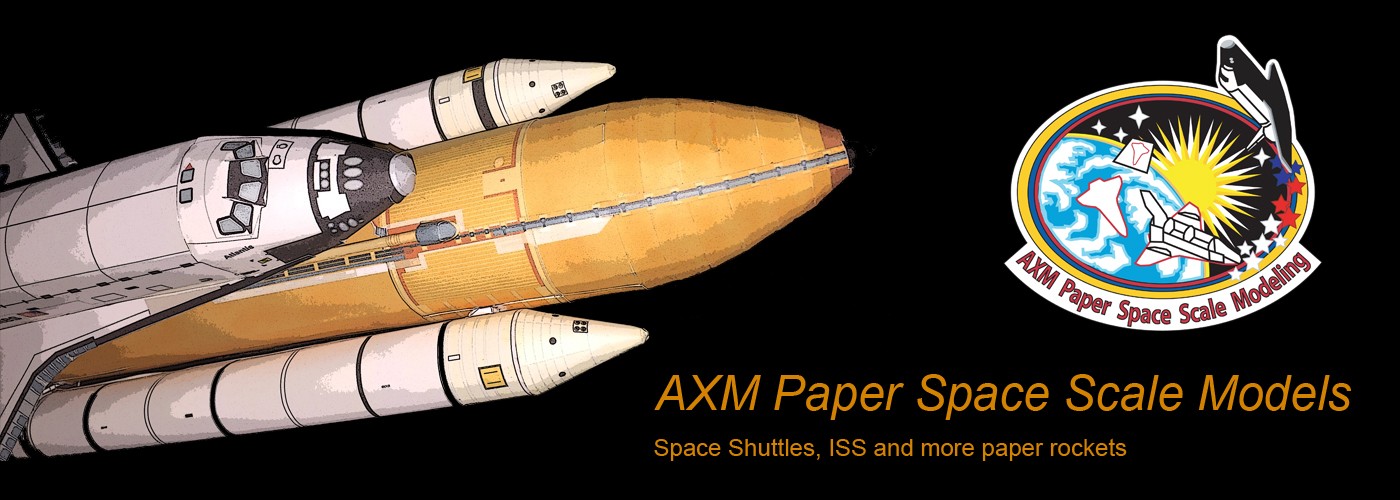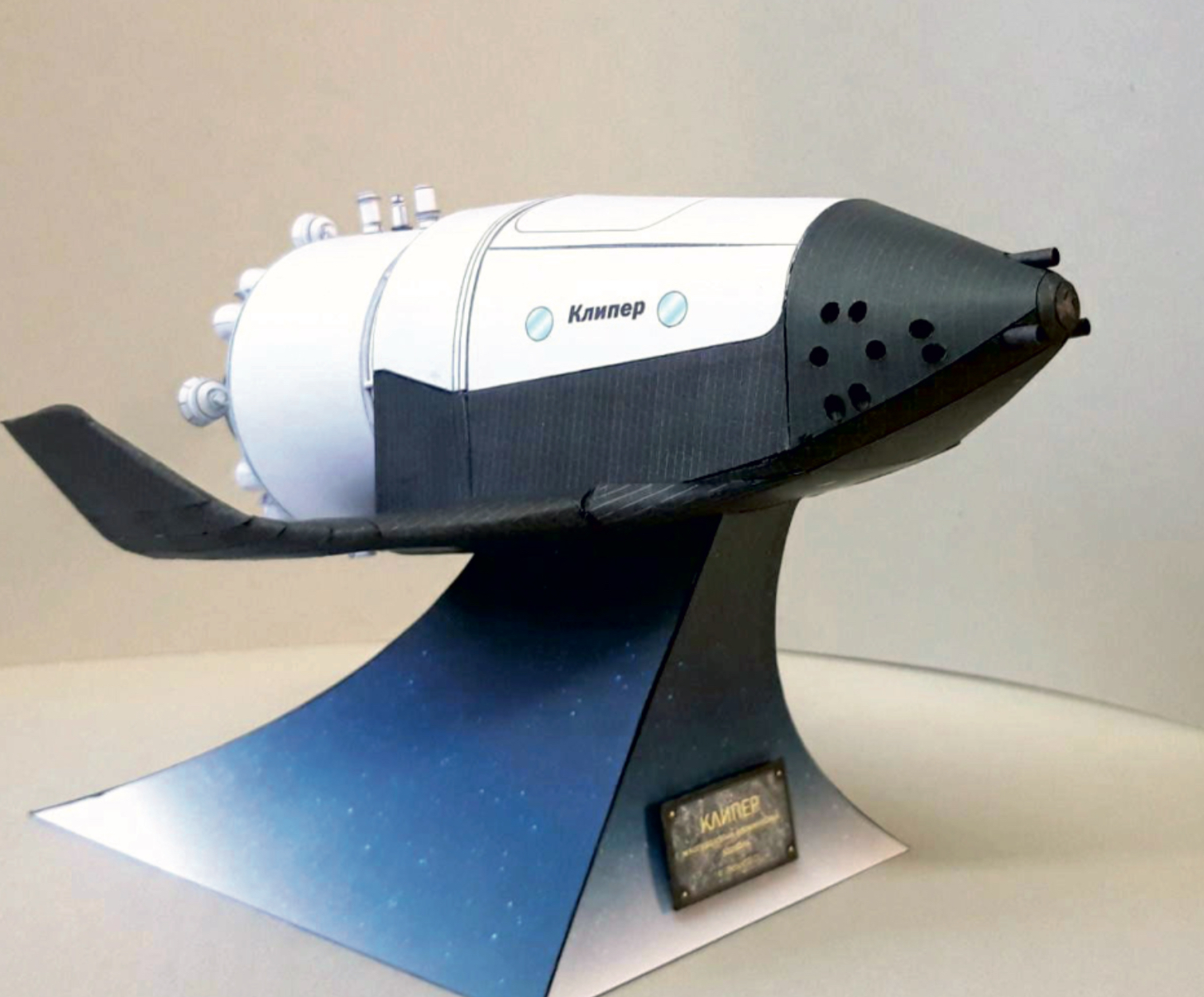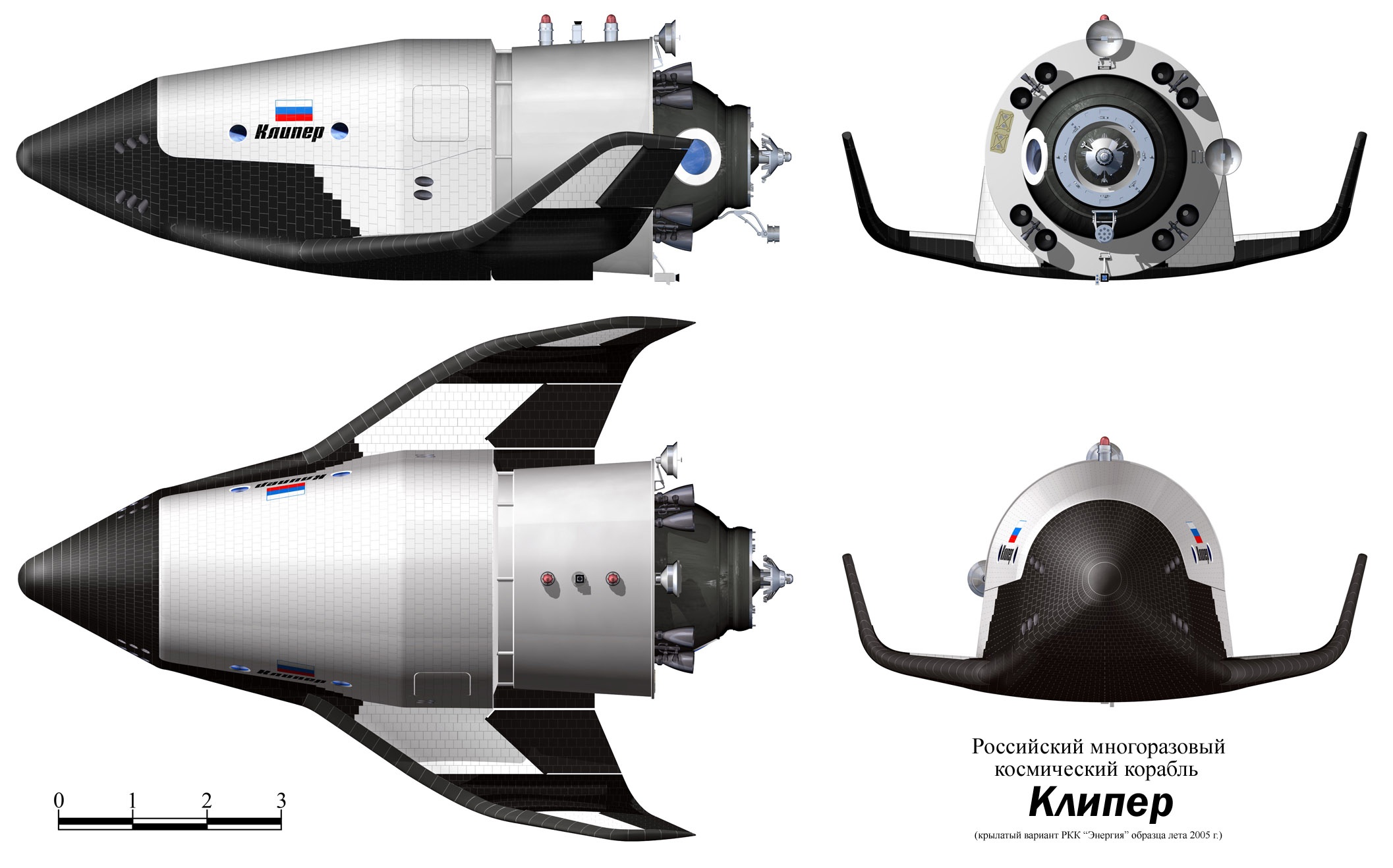Kliper Spacecraft
1:50 scale papermodel of the Kliper (Clipper) spacecraft from Russian designer Alexei Kozlov.
Translated from original source:
In honor of Cosmonautics Day - an exclusive from our respected hobby colleague! With cockpit interior!
Russian reusable spacecraft Clipper (project).
Developer: Alexey Kozlov
Instruction: in stock
Scale: 1/50
Work on the design of manned spacecraft at RSC Energia has always been a priority. In the 1980s, to replace the ships of the Soyuz series, the project of the reusable wingless spacecraft Zarya was developed, but was not approved. Even in the 90s of the XX century, the Soyuz TM ships were being modified, there was a reserve for further modernization (Soyuz TMM, Soyuz TMS).
In the second half of the 1990s, the leading aerodynamicist of RSC Energia, A. G. Reshetin, proposed a new ship according to the “supporting hull” scheme - an intermediate version between the winged shuttle and the Soyuz ballistic capsule. As part of the research and development, the aerodynamics of the ship was calculated, and its model was tested in a wind tunnel. In 2000-2002, the ship was further developed, but the difficult situation in the industry did not leave hope for implementation. Finally, in 2003, A. G. Reshetin managed to turn the tide - the project received a start in life.
In 2004, the promotion of Clipper began. Due to the insufficiency of budgetary funding, the main emphasis was placed on cooperation with other space agencies. In the same year, the ESA showed interest in the Clipper, but required a radical revision of the concept to suit their needs - the ship was supposed to land on airfields like an airplane. Less than a year later, in cooperation with the Sukhoi Design Bureau and TsAGI, a winged version of the Clipper was developed. By the same time, a full-scale model of the ship was created at the RKK, work began on the layout of the equipment.
Structurally, the Clipper consists of a reentry vehicle (VA) and an orbital compartment. The main feature is the return apparatus of the "carrying body" type with a peculiar iron-like shape. A significantly higher lift-to-drag ratio (0.6–1.8 in hypersonic versus 0.25–0.3 for the Soyuz headlight) allows for a gliding descent in the upper atmosphere, which reduces thermal loads and allows the use of reusable thermal protection. The design also allows the return vehicle to perform lateral maneuvers within 500–600 km, while the “headlights” can correct no more than 70–80 km during descent from orbit. Unlike the Soyuz, the VA is aerodynamically unstable, therefore, to maintain the desired orientation during descent, the vehicle has aerodynamic shields. The winged VA generally retained the wingless fuselage, but despite this, it has a high aerodynamic quality at subsonic levels (up to 4-5), which allows landing on airfields like a conventional aircraft.
The orbital compartment was designed on the basis of the Soyuz orbital compartment. The rendezvous and docking systems were taken from it. Orbital maneuvering engines were supposed to be made on a pair of "ethanol / liquid oxygen". ChS reserve ~420 m/s.
From below, a module with solid-fuel engines of the emergency rescue system (SAS) is docked to the orbital compartment. They are also used for launching into orbit.
The Clipper is being developed as one of the elements of the transport system for servicing orbital complexes (stations), its tasks include:
1. Performing the function of a rescue ship to evacuate the station crew to Earth in the event of an emergency situation (when the ship is part of the station);
2. Return to Earth and delivery to the orbital station of the crew and payload;
3. Removal from the station of equipment that has worked out its resource, waste products, etc.
4. Return to Earth the results of research and experiments;
5. Performing individual flight operations while on duty, as part of the station within the spacecraft's available resources.
Among the tasks that the Clipper had to solve were not only the delivery of crews and cargo to orbital stations (in particular, the ISS) and their return to Earth, but also the urgent evacuation of the crew of the orbital station, research and tourist orbital flights. The duration of an autonomous flight of the Clipper is 5 days (when fulfilling the target tasks, the duration of an autonomous flight without docking with the station is up to 15 days), in the docked state, its resource will last for a whole year.
Boris Sotnikov, deputy head of the scientific and technical center for design and calculation work at RSC Energia, said that the launch of the Clipper is possible from all Russian spaceports where there are Soyuz launch complexes: Baikonur and Plesetsk. In case of successful development of the Soyuz on Kourou project, it will also be from the launch complex under construction, at the Kourou cosmodrome in French Guiana.
In the RSC Energia project, to launch the Clipper spacecraft into low Earth orbit, it was supposed to use the new Russian Onega launch vehicle, developed on the basis of a deep modernization of the Soyuz medium-class launch vehicle.
However, due to the fact that the simultaneous development of a spacecraft and a launch vehicle could require large financial and time costs, the ex-general director of RSC Energia, Yuri Semenov, turned to his Ukrainian colleagues with a proposal to use the Onega launch vehicle being designed in joint operation on cosmodrome "Baikonur" Ukrainian-Russian launch vehicle "Zenit-2". According to him, the cost of creating a flight model of the Clipper is about 10 billion rubles (in 2004 prices).
The development of the Clipper was not one of RSC Energia's priorities. According to Valery Ryumin, Deputy General Designer of RSC Energia, at the world forum EXPO-2005, held in Japan, in 2005 the financing of the Clipper project with funds from the budget was not planned. And in the future, R & D was financed from the corporation's own funds, in particular, in 2007, it was planned to test a number of technical solutions included in the project at a ground test base.
The competition for a new Russian spacecraft was announced by the Federal Space Agency (Roskosmos) on November 23, 2005. The projects were presented by the enterprises of OAO RSC Energia im. S.P. Korolev” (project “Clipper”), GKNPTs im. M. V. Khrunichev and OAO NPO Molniya. After a month of discussion, the competition committee announced that none of the submitted options met the tender conditions, all of them (including the most developed Clipper) were sent for revision, and the final decision was postponed to June.
At first, Europe showed great interest in the Clipper project. It was assumed that ESA would develop avionics and a number of other ship systems, and would invest £100 million annually in the project for 10 years. In December 2005, the ESA Council of Ministers discussed the allocation of 60 million euros for preliminary studies on the Clipper project. However, the project did not receive support, and the decision on the forms of cooperation and the scope of funding was postponed until the summer of 2006. After the refusal of ESA from joint work on the Clipper, Roskosmos accepted an offer to participate in the development of the European advanced manned space transport system ACTS based on the European automatic cargo vehicle ATV and Russian technologies. At the same time, after 2 weeks, the Russian competition for a promising reusable ship was officially terminated due to technical and economic unfeasibility.
According to the concept of the development of Russian manned cosmonautics for 2006-2030 developed by RSC Energia and adopted on July 14, 2006 by the Government of the Russian Federation. the stage-by-stage creation of an industrial transport space system, the development of near-Earth space, the Moon and flights to Mars are envisaged. In terms of the transport system, the priority task is the modernization of the Soyuz spacecraft and the creation of the Parom interorbital tug. Then, after 2015, as a Prospective Manned Transport System (PPTS), it is planned to create a national (different from participation in the ESA project) more versatile ship than the Clipper, capable of flying both to near-Earth orbit and to the Moon. The second competition for a new Russian ship was held, the winner of which on April 6, 2009 was announced by RSC Energia, which by 2018 should create a wingless partially reusable manned transport ship of a new generation (PTKNP, "Rus"), with the widespread use of systems, designed for Clipper.
The instructions for assembling the paper model of this spacecraft is included in the pdf. To protect against dust and pollution, you can pre-coat the pattern sheets with hair spray (strong fixation varnish is best), you can also cover the finished model with it, even without pre-processing it.








